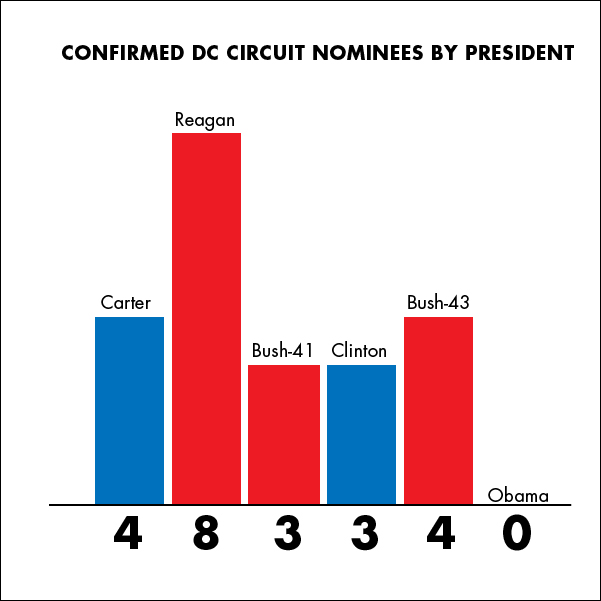Today, the Senate Judiciary Committee holds a hearing on the nomination of Sri Srinivasan to sit on the Court of Appeals for the D.C. Circuit. Srinivasan, who was first nominated ten months ago yet is just now receiving a hearing, is the latest Obama judicial nominee caught in the web of Senate obstruction. Last month, Republicans blocked the nomination of Caitlin Halligan to a seat on the same court, despite her impeccable qualifications and strong bipartisan backing. Some important facts to keep in mind during and after today’s hearing:
- President Obama is the first president since Woodrow Wilson to serve a full first term without putting a single judge on the D.C. Circuit. There are currently four vacancies on the 11-member D.C. Circuit, and three of the remaining judges are eligible for retirement or senior status, meaning we could soon see as many as seven vacancies on this 11-member court. Senate Republicans have prevented President Obama from filling a single one, although he first nominated Srinivasan ten months ago and Halligan in 2010.

- The D.C. Circuit, which has the final word on reams of executive actions, congressional enactments, and federal regulations each year, is currently dominated by far-right George W. Bush nominees. President Bush succeeded in shifting the courts – and especially the D.C. Circuit — far to the right during his presidency. His D.C. Circuit nominees have systematically rolled back protections for workers and consumers. A mainstream Obama nominee would provide some much-needed balance to this influential court.
-
Our federal courts are suffering because of entrenched Republican obstruction. Because of both public and silent Republican filibusters, President Obama’s appeals court nominees have been forced to wait an average of 153 days between Judiciary Committee approval and a yes-or-no vote from the Senate. At this point in Bush’s presidency, the average wait for confirmed appeals court nominees was just 37 days. The foot-dragging is unrelated to who the nominee is – even consensus nominees with the strong support of their Republican home-state senators have been forced to wait for months through active or silent filibusters before the Senate is finally allowed to hold a confirmation vote. This pointless obstruction, which is echoed at the district court level, has led to persistently high vacancy rates and longer waits for Americans seeking their day in court.
###